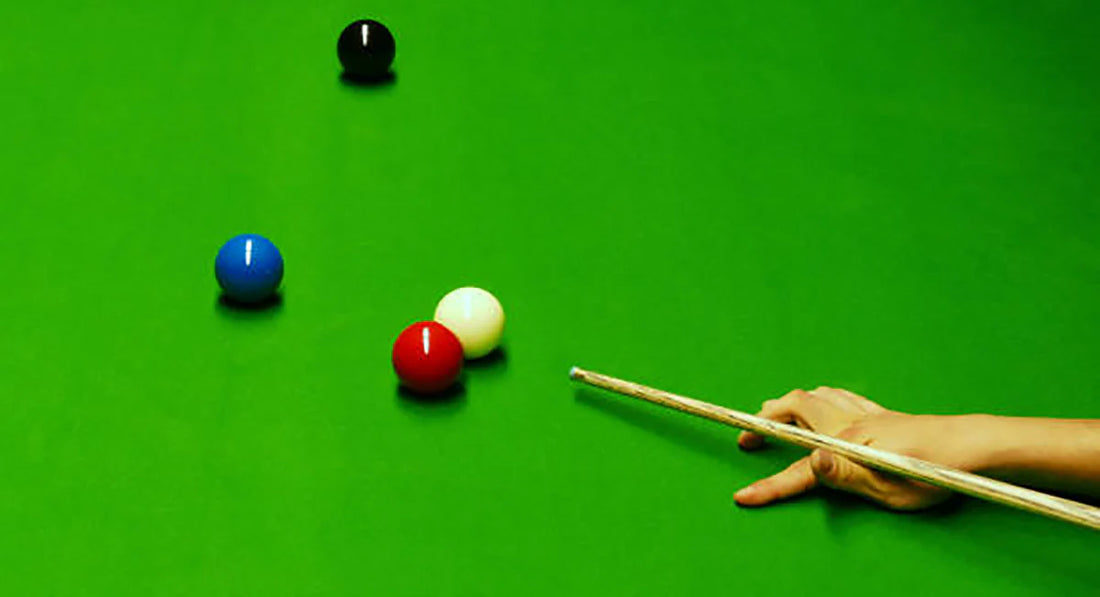
Everything You Need to Know About the Snooker Miss Rule
If you’ve ever been bent over the baize, lining up what feels like an impossible escape, you’ll know the knot in your stomach when the referee calls out: “Foul and a miss.”
It can turn a friendly sparring match into a heated argument, or a professional match into a tactical minefield. Few rules in snooker spark as much debate as the Miss Rule. Some believe it's necessary for fair play, while others argue it unnecessarily slows down the pace of the game. But whether you love it or hate it, if you truly love snooker, you absolutely must understand it inside out.
This guide will walk you through the essentials: what the rule actually means, why it exists, the controversies around it, and—most importantly—how it affects your own game down at the club.
What Exactly Is the Snooker Miss Rule?
In simple terms, the Miss Rule comes into play when a player commits a foul by failing to hit the cue ball they’re meant to strike.
Imagine this: the red is on, you’re snookered, and you try to swerve around a color to reach it—but you miss. The referee then has a choice: to call “foul and a miss.” This means:
- Your opponent gains penalty points.
- They can ask you to play again from where the cue balls lie.
- Or—crucially—they can have the balls put back to their original positions and force you to replay the shot.
That last part is what really sets the Miss Rule apart. It’s not just a penalty; it can force you into facing the same nightmare situation again and again until you escape properly. And the penalty isn't always four points. If you foul against the blue, pink, or black, your opponent receives the value of that ball instead. In some cases, missing can cost you seven points.
Why Does the Miss Rule Exist?
Before September 1995, players had figured out how to game the system. If they were stuck in a tricky snooker situation, they wouldn't try to actually escape, but instead deliberately push the cue ball to safety. Yes, they'll lose some points, but this often leaves their opponents without easy pockets. Matches can spiral into a cycle of deliberate fouls and tactical deadlocks, and action must be taken.
The Miss Rule was introduced to eliminate this kind of rigged play. By forcing players to make a proper attempt—and allowing the referee to readjust the cue ball—it restores fairness and raises the skill ceiling. Snooker once again becomes a test of courage, touch, and genuine escape skills, rather than cheap fouls.
How It Works in Practice
Let's explain this with everyday examples:
- Basic foul and miss: You’re snookered on the last red ball. Penalty given, opponent chooses whether to play or allow you to continue.
- Repeated misses: You fail two or three times from the same position. The referee keeps calling “foul and a miss,” and you’re dragged back into the shot until you either make contact or the referee deems you've done your best.
- Three miss rule: If you have a clear line of sight to the ball on, and you miss it three times in a row, you lose the frame. The referee warns you after the second attempt, and the pressure in that moment can be brutal.
The Role of Referee Discretion
The problem is: the missed ball rule isn't black and white. It largely comes down to the referee's judgment.
A ref must decide whether you’ve made the best possible attempt. Did you take the easiest available escape route? Did you strike with the right pace and intent? If you chose a showy three-cushion escape when a one-cushion path was there, don’t be surprised when the call goes against you.
This discretion can be frustrating for players. A nearly missed ball on a three-star attempt might look like a genuine effort, but if the referee determines there was an easier route, it's still a missed ball. At the highest level, referees like Jan Verhaas and Desi Bozhilova are praised for their cool heads in moments like these—but at the club level, let's just say, the arguments can sometimes get heated.
Famous Controversies
The Miss Rule has sparked its fair share of drama.
- 2009 UK Championship – Higgins vs O’Sullivan: Ronnie O'Sullivan played a snooker on a colored ball and accidentally hit a red ball before hitting it. Referee Jan Verhaas chose not to call a missed shot, as the red ball became the live ball for the next stroke. This ruling prompted an immediate rule revision to close such loopholes.
- Club level arguments: Anyone who’s played league nights will know how heated debates can get when cue balls aren’t replaced “exactly” or when one player insists they've made their best effort.
These flashpoints serve as a reminder of how difficult it is to apply this rule fairly, even with years of experience.
Technique and Accuracy
Another persistent issue is repositioning the cue ball. Even with television replays, accurately placing the ball back in place can be challenging. At local clubs, this is often done ‘‘by eye’’ with plenty of muttering from the sidelines.
With today’s technology, there’s an argument for using more advanced tracking systems to improve accuracy. Snooker is a game of millimeters, and a poorly replaced ball can alter the course of a frame.
Why It Gets People Talking
Critics of the Miss Rule argue that it slows down the pace of play and confuses casual spectators. Imagine watching the same shot being hit five times during a televised match, with the referee hunched over the pool table, repositioning the ball over and over again. This could be confusing for the casual fan.
On the other hand, defenders argue that the rule maintains the fairness of the sport. Without it, players could foul their way to safety. Snooker isn't meant to be a cautious exchange of scores; it's meant to reward skill and courage. Like so much else in sports, it's about a balancing act between fairness and entertainment.
What It Means for You at the Club
Even if you don’t have a professional referee at your local club, the spirit of the Miss Rule matters.
- A mindset under pressure – Knowing you could be asked to replay a shot forces you to think more carefully about safety.
- Mastering the Cue ball – Escaping snookers is a test of touch and spin, not luck. That means hours of practice.
- Better equipment matters – A warped club cue with a mushroomed cue tip won’t help you get around blockers. A good-quality snooker cue gives you the control needed when the pressure’s on.
Practical Tips for Handling the Miss Rule
- Learn the swerve: A touch of the side can bend the white just enough to avoid the blocker.
- Get comfortable with cushions: Two and three-cushion escapes should feel second nature.
- Play smart, not stubborn: Sometimes the simplest escape is best.
- Upgrade your cue equipment: A well-balanced English pool cue with a hard cue tip makes a world of difference when you’re living on fine margins.
The Future of the Rule
The debate continues. Some are calling for referees to be given more discretion over free-balls, while others are advocating for alternatives like automatic free-balls rather than resets. But for now, most players—even if they may complain—accept the Miss Rule as necessary.
As technology improves, we may see more precise ball changes and even digital aids for referees. But the principle is likely to remain the same: snooker should reward honest effort, not tactical fouls.
Snooker Miss Rule can feel like both a safety net and a straitjacket. It frustrates players yet keeps the sport fair. As a player, the best thing you can do is understand it, respect it, and prepare for it. Hone your escapes, sharpen your safety play, and arm yourself with a billiard cue that gives you confidence in the crucial moments.
Because when the referee calls out “foul and a miss”, you don’t just want to mutter under your breath. You'll want to walk back to the table, confident that you're ready to correct your mistakes.
